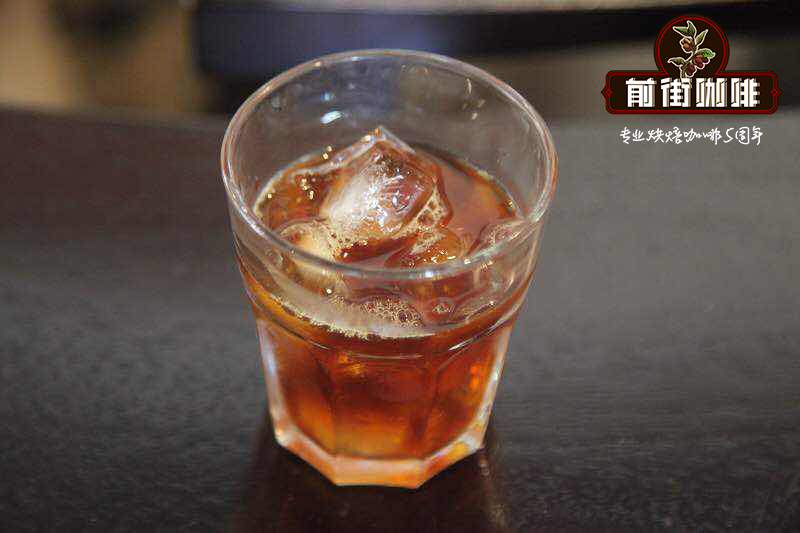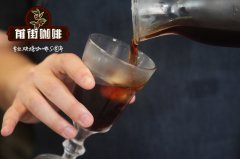The Central Mountains of Madagascar | the flavor of washed Arabica and Robusta coffee beans?

Professional coffee knowledge exchange more coffee bean information please follow the coffee workshop (Wechat official account cafe_style)
The Central Mountains of Madagascar | the flavor of washed Arabica and Robusta coffee beans?
Producing area: the central mountain range of Madagascar.
Altitude: 3600-4900 feet, natural organic pollution-free, fertile volcanic soil type.
Environment: the annual average temperature is 24 ℃, the temperature difference between day and night is +-5 degrees, and the annual precipitation is 2000-3000 mm.
Treatment method: washing treatment
Flavor description: can be baked in a shallow medium with espresso mellow and thick, showing bright fruit acidity and green plum aromas, elegant changes in each mouthful, continuous sweetness in the mouth, and satisfying nectar sweetness.
Altitude: 1200-1600 m, fertile volcanic soil type.
Environment: the annual average temperature is 25 ℃, the temperature difference between day and night is +-4 degrees, and the annual precipitation is 1800-3200 mm.
Dagaska is an Indian Ocean island country off the east coast of Africa. It is the first island in Africa and the fourth largest island in the world, with an area of 587041 square kilometers, including 581540 square kilometers of land and 5501 square kilometers of water. The main export products are coffee.
Coffee characteristics: coffee beans are a commodity in global trading volume second only to crude oil. The rise and fall of prices are related to the political and economic stability of coffee-producing countries. Coffee beans have been the most speculative commodity in the world for decades. Generally speaking, it takes two to three years for coffee trees to bear fruit and five to six years for coffee to be harvested. Therefore, it is suitable for small farmers with limited funds to operate and avoid investment risks and losses.
There are about 40 varieties of coffee beans in the world, the common coffee ARABICA coffee grows in high altitude areas, the flavor is more rich, is a better coffee variety, ROBUSTA coffee grows in low altitude areas, easier to grow, caffeine content is also higher.
Coffee uses: coffee is used as a beverage. Most of the ground coffee used in Europe and the United States is ARABICA coffee, while ROBUSTA coffee is mainly made of instant coffee, which is a relatively cheap coffee.
Coffee production: coffee is widely distributed in South America, Central America, West Indies, Asia, Africa, Arabia, South Pacific and Oceania. In terms of production, Brazil ranks first in the world, accounting for about 1/3 of the world, followed by Colombia, accounting for about 15 per cent of the world, followed by Africa (including C ô te d'Ivoire, Uganda, Kenya, etc.), Arabia, and distributed in Asian countries and islands.
ARABICA coffee is mainly produced in Brazil, Colombia, Mexico, Guatemala Mara, El Salvador, Honduras, Costa Rica, Nicaragua and other countries, mainly concentrated in Central and South America, Brazil is the most important producer of ARABICA coffee.
ROBUSTA coffee production is concentrated in Southeast Asia, Indonesia, Vietnam, Thailand, India and other countries.
Coffee supply-demand: most of the coffee importing countries are developed countries, and the largest coffee importing countries in the world are the United States, Germany, Japan, South Korea, France and other countries, accounting for about half of the global coffee consumption. In addition, Brazil is also a major consumer, with annual per capita coffee consumption close to that of European countries.
The main exporters of coffee are Brazil, Colombia, Vietnam, Indonesia, Mexico, Uganda and other developing countries. As the trade barriers to coffee are lower than those of other agricultural products, and international organizations also encourage developing countries to grow coffee, poor countries are allowed to join the cultivation process.
Factors affecting the price of coffee:
1. Climate, diseases and insect pests in the producing area
two。 Seasonal factors
3. International demand and supply
4. Government policies and International Coffee Organization measures
Suggested baking degree: the flavor characteristics of each baking degree are obvious.
Description of flavor characteristics:
Madagascar Andapa production area has a round flavor, moderate acidity and balance, shallow, shallow, medium, deep and deep 5 stages of baking. Bring 5 changes to the taste. Different African customs--
Madagascar ANDAPA has 5 baking degrees to choose from, as described below:
● shallow baking: when brewing green plum fruit acid flavor is rich, the entrance fruit acid turns sweet back to sweet, the feeling is obvious. With an aftertaste.
● shallow baking: brewing with nutty, fruity, berry aromas, taste bright acidity, immediately return to the palate. The aftertaste is mellow.
Baking in ●: full of aroma, slightly sour taste, less sweet, and longan fragrance at the bottom of the cup.
● medium and deep baking: the entrance is obviously mellow, with peanut flavor, caramel flavor, full aroma, a hint of bitterness, suitable for iced coffee, sweet or sour. After soaking, there is a strong taste of longan core.
● deep baking: the entrance is thick and mellow, the highest, charcoal feeling, with a hint of bitterness, thick end rhyme. Drink at room temperature. It is not sour and has a chocolate taste.
Qianjie cooking recommendation: [V60 hand]
Filter cup: Hario V60
Water temperature: 88 degrees
Degree of grinding: small Fuji degree of grinding 4
Cooking methods: the ratio of water to powder is 1:15, 15g powder, the first injection of 25g water, 25 s steaming, the second injection to 120g water cut off, waiting for the powder bed water to half and then water injection, slow water injection until 225g water, extraction time about 2:00
Analysis: using three-stage brewing to clarify the flavor of the front, middle and back of the coffee. Because the V60 has many ribs and the drainage speed is faster, when the water is cut off, it can prolong the extraction time and better extract the nut and chocolate flavor of the tail section.
Important Notice :
前街咖啡 FrontStreet Coffee has moved to new addredd:
FrontStreet Coffee Address: 315,Donghua East Road,GuangZhou
Tel:020 38364473
- Prev

Guatemala Graft Estate Finca El Injerto Introduction How to Drink Guatemala Coffee
Professional coffee knowledge exchange More coffee bean information Please pay attention to coffee workshop (Weixin Official Accounts cafe_style) Guatemala has been planting coffee since around 1850. Before World War I, the Germans controlled up to 80% of the country's production, most of which was exported to Germany. The official coffee farmers association ANACAFE was established in the 1990s to integrate all coffee farmers according to region and flavor.
- Next

How to drink Red Wine in the Sun at Aguirate Manor, Costa Rica _ Costa Rican Cold extract Coffee course
For more information on coffee beans, please follow the coffee workshop (Wechat official account cafe_style) Costa Rica Tempranillo Chateau Aquilet, Costa Rica, where wine is sunburned. Costa Rica faces the Pacific Ocean to the west and the Caribbean Sea to the east. Since Costa Rica is located in a volcanic area
Related
- Detailed explanation of Jadeite planting Land in Panamanian Jadeite Manor introduction to the grading system of Jadeite competitive bidding, Red bid, Green bid and Rose Summer
- Story of Coffee planting in Brenka region of Costa Rica Stonehenge Manor anaerobic heavy honey treatment of flavor mouth
- What's on the barrel of Blue Mountain Coffee beans?
- Can American coffee also pull flowers? How to use hot American style to pull out a good-looking pattern?
- Can you make a cold extract with coffee beans? What is the right proportion for cold-extracted coffee formula?
- Indonesian PWN Gold Mandrine Coffee Origin Features Flavor How to Chong? Mandolin coffee is American.
- A brief introduction to the flavor characteristics of Brazilian yellow bourbon coffee beans
- What is the effect of different water quality on the flavor of cold-extracted coffee? What kind of water is best for brewing coffee?
- Why do you think of Rose Summer whenever you mention Panamanian coffee?
- Introduction to the characteristics of authentic blue mountain coffee bean producing areas? What is the CIB Coffee Authority in Jamaica?

